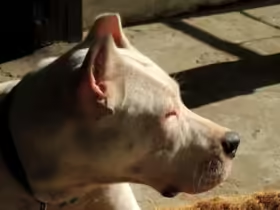Introduction
The Labrador Retriever is one of the most popular dog breeds worldwide, and the black Labrador, in particular, holds a special place in the hearts of many dog enthusiasts. Known for their friendly nature, intelligence, and versatility, black Labradors are not only great family pets but also excel in various roles such as service dogs, hunting companions, and therapy animals.
In this comprehensive guide, we’ll explore everything you need to know about black Labradors—from their history and physical characteristics to their temperament, training, and care requirements. Whether you’re considering bringing a black Labrador into your home or already have one as a beloved family member, this guide will provide valuable insights into caring for and understanding this remarkable breed.
1. History of the Black Labrador
Origin of the Labrador Retriever
The Labrador Retriever traces its roots back to the early 19th century in Newfoundland, Canada. Originally known as the St. John’s Dog or Lesser Newfoundland, these dogs were bred to assist fishermen by retrieving nets and catching fish that escaped from fishing lines. Their excellent swimming abilities and retrieving instincts made them invaluable to fishermen.
The breed was later brought to England, where they were refined and developed into the Labrador Retriever we know today. The black Labrador, along with its yellow and chocolate counterparts, became a favorite among hunters and families due to its versatility, intelligence, and friendly demeanor.
The Black Labrador’s Popularity
The black Labrador was one of the first recognized color variations of the breed. Initially, black was the most common color, and breeders preferred it because of its uniform appearance and popularity in hunting circles. Over time, the black Labrador became a symbol of the breed’s working abilities and loyal temperament, leading to its widespread popularity.
2. Physical Characteristics
Size and Build
Black Labradors are medium to large-sized dogs with a strong, athletic build. They typically stand between 21.5 to 24.5 inches tall at the shoulder and weigh between 55 to 80 pounds, with males generally being larger than females. Their muscular frame and sturdy limbs make them excellent swimmers and retrievers, traits that are highly valued in the breed.
Coat and Color
The defining feature of the black Labrador is its sleek, dense, and water-resistant coat. The coat is short and lies close to the body, providing protection against harsh weather conditions. The color is a deep, solid black, which can appear almost glossy when the coat is well-maintained.
Facial Features
Black Labradors have broad heads with a pronounced stop (the transition between the forehead and muzzle). Their expressive, medium-sized eyes are usually brown or hazel, reflecting their intelligence and friendly nature. The ears are set slightly above the eyes and hang close to the head, giving them a gentle, approachable appearance.
Tail
One of the most distinctive features of a Labrador Retriever is its tail, often referred to as an “otter tail.” The tail is thick at the base, gradually tapering towards the tip, and is covered in the same dense, short fur as the rest of the body. This tail helps with balance and steering when swimming, a testament to the breed’s water-retrieving heritage.
3. Temperament and Personality
Friendly and Sociable
Black Labradors are renowned for their friendly and outgoing nature. They thrive on human interaction and are known to be particularly good with children, making them ideal family pets. Their sociable nature also extends to other dogs and pets, making them a versatile choice for multi-pet households.
Intelligent and Trainable
One of the standout qualities of black Labradors is their intelligence. They are quick learners and highly trainable, which is why they are often used in various working roles, including service dogs, therapy dogs, and search and rescue dogs. Their eagerness to please their owners makes training a rewarding experience for both the dog and the owner.
Energetic and Playful
Black Labradors are full of energy and require regular physical activity to keep them happy and healthy. They love to play, especially games that involve fetching or swimming, which are natural to their retrieving instincts. However, their high energy levels mean they need plenty of exercises to prevent boredom and destructive behavior.
Loyal and Protective
While black Labradors are generally friendly to everyone they meet, they are also known for their loyalty to their families. They can be protective of their home and loved ones, making them reliable watchdogs. However, they are not typically aggressive, and their protective nature is more about alerting their owners to potential threats rather than confronting them directly.
4. Training and Socialization
Early Socialization
Socialization is crucial for black Labradors, especially during their puppyhood. Exposing them to a variety of people, places, sounds, and experiences helps them grow into well-adjusted adults. Socialization reduces the likelihood of behavioral issues and helps ensure that they are comfortable and confident in different environments.
Basic Obedience Training
Given their intelligence, black Labradors excel in obedience training. Basic commands like “sit,” “stay,” “come,” and “leave it” are essential and should be introduced early. Positive reinforcement techniques, such as treats, praise, and play, work exceptionally well with this breed.
Advanced Training
For those interested in furthering their black Labrador’s training, advanced obedience, agility, and specialized tasks like retrieving and scent work can be rewarding. Many black Labradors enjoy the mental stimulation and physical activity that comes with advanced training, making them excellent candidates for competitive sports and working roles.
Consistency and Patience
While black Labradors are highly trainable, consistency and patience are key. Regular training sessions and a calm, assertive approach will yield the best results. It’s important to keep training sessions fun and engaging to maintain the dog’s interest and enthusiasm.
5. Care and Maintenance
Diet and Nutrition
A balanced diet is essential for maintaining the health and vitality of a black Labrador. High-quality commercial dog food, specifically formulated for large, active breeds, is recommended. The diet should include the right mix of proteins, fats, carbohydrates, vitamins, and minerals. Portion control is important, as Labradors are prone to obesity if overfed.
Exercise Requirements
Black Labradors are an active breed that requires daily exercise to stay healthy. Activities such as walking, running, swimming, and playing fetch are ideal for burning off energy. Aim for at least an hour of exercise each day, split between different activities to keep your dog mentally and physically stimulated.
Grooming
Despite their short coat, black Labradors shed year-round and require regular grooming to keep their coat healthy. Weekly brushing will help remove loose hair and reduce shedding around the home. During the shedding season (typically spring and fall), more frequent brushing may be necessary. Regular ear cleaning, nail trimming, and dental care are also important parts of their grooming routine.
Health Considerations
Black Labradors are generally healthy, but like all breeds, they are prone to certain health conditions. Common issues include hip dysplasia, elbow dysplasia, and eye conditions such as progressive retinal atrophy (PRA). Regular veterinary check-ups, a healthy diet, and maintaining an appropriate weight can help prevent or manage these conditions.
6. Living with a Black Labrador
Family Life
Black Labradors make excellent family pets. Their gentle and patient nature makes them great companions for children of all ages. They are also adaptable and can thrive in various living environments, provided they receive enough exercise and mental stimulation.
Compatibility with Other Pets
Their sociable nature means that black Labradors generally get along well with other dogs and even cats, especially if they are introduced at a young age. Proper introductions and supervised interactions are important to ensure harmony within a multi-pet household.
Apartment Living
While black Labradors are large and energetic, they can adapt to apartment living if they receive adequate exercise. Regular outdoor activities, trips to the park, and interactive toys can help meet their exercise needs and prevent boredom in a smaller living space.
Traveling with a Black Labrador
Black Labradors are typically good travelers, especially if they are used to car rides from a young age. Whether you’re taking a road trip or flying, it’s important to ensure your dog’s comfort and safety. Use a secure crate or dog seatbelt in the car, and make sure they are well-hydrated and have opportunities for breaks during long journeys.
7. Choosing a Black Labrador Puppy
Selecting a Reputable Breeder
If you’re looking to add a black Labrador puppy to your family, it’s important to choose a reputable breeder. Look for breeders who prioritize health, temperament, and breed standards. A good breeder will provide health clearances for the puppy’s parents, showing they are free of common genetic conditions.
Puppy Health and Temperament
When selecting a puppy, observe its health and temperament. A healthy black Labrador puppy should be active, playful, and curious, with clear eyes, a clean coat, and a well-fed appearance. It’s also important to assess the puppy’s temperament to ensure it aligns with your lifestyle and expectations.
Rescue and Adoption
Consider adopting a black Labrador from a rescue organization or animal shelter. Many wonderful black Labradors are in need of loving homes, and adopting can be a rewarding experience. Rescue organizations often provide background information on the dog’s health and temperament.











Leave a Reply